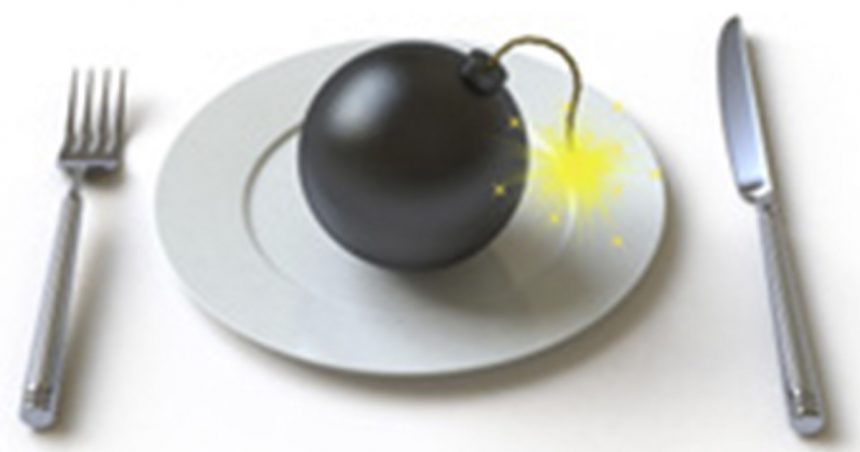On April 11th, the California Assembly’s Committee on Health passed a bill banning five chemical food ingredients: brominated vegetable oil, potassium bromate, propylparaben, Red Dye No. 3, and titanium dioxide. These ingredients, commonly found in popular grocery store items, have been linked to health risks. It’s important to check labels and avoid products containing these harmful additives.
The Five Food Ingredients You Don’t Want In Your Food
These five ingredients have been banned in Europe and are now prohibited in California as well. Despite this, they can still be found in many food products. Checking labels for these additives is crucial for your health. If these ingredients are listed, it’s best to opt for a safer alternative. (1, 2)
1. Brominated vegetable oil
Commonly used in sports drinks as an emulsifier, brominated vegetable oil is also found in citrus-flavored sodas to prevent flavor separation. However, the use of bromine in this ingredient has raised concerns regarding its impact on the nervous system and potential tumor formation. While the FDA claims it’s safe for consumption, its controversial nature makes it a risky choice.
2. Potassium bromate
This chemical is often added to bakery products to enhance texture and rise. Although regulated by the FDA, studies suggest it may be carcinogenic. While the amount present in products is limited, some prefer to steer clear of this additive due to its potential risks.
3. Propylparaben
Used as a preservative in various products to extend shelf life, propylparaben can cause skin irritation and allergic reactions in many individuals. Avoiding this additive in your diet is recommended to prevent potential health issues.
4. Red dye no. 3
This artificial dye, found in numerous food products, has been linked to hyperactivity, asthma attacks, and certain cancers. Despite being banned in cosmetics, it’s still present in many food items, posing health risks to consumers.
5. Titanium dioxide
Commonly used as a food coloring to enhance brightness, titanium dioxide can lead to respiratory problems and potential carcinogenic effects. As research on its safety continues, it’s advisable to limit exposure to this ingredient in your diet.
The Bottom Line
The ban on these five food ingredients in California marks a positive step towards safer food consumption. However, vigilance is still key. Reading labels and opting for organic, non-processed foods can help you avoid these additives, especially for vulnerable populations like children and pregnant women.
Keep Reading: Is it safe to cook with aluminum foil? Potential dangers and alternatives
Sources
- “5 Dangerous Ingredients That Are in Our Food but Shouldn’t Be.” Consumer Reports. Scott Medintz. March 20, 2023.
- “AB-418 Food product safety.” Legislature. April 13, 2023.
- “Nutrition and healthy eating.” Mayo Clinic. Katherine Zeratsky, R.D., L.D.
- “Toxicity and carcinogenicity of potassium bromate–a new renal carcinogen.” NCBI. Y Kurokawa, A Maekawa, M Takahashi, and Y Hayashi. July 1990.
- “Trending – Potassium Bromate.” Michigan State University. Elisabeth Anderson; Joe Zagorski. February 27, 2023
- “Propylparaben.” Pub Chem
- “Why Is Red Dye No. 3 Banned in Cosmetics but Still Allowed in Food?” Consumer Reports. Lauren Kirchner. November 14, 2022.
- “Titanium dioxide in our everyday life; is it safe?” NCBI. Matej Skocaj, et al. November 16, 2011






